Hollow Glass Microspheres Stronger Spheres Tackle Injection Molding
Looking for a way to make lighter parts without giving up properties? New hollow microspheres are stronger than ever—enough to withstand the rigors of injection molding.
Glass microspheres have been used as low-density fillers for various kinds of polymeric compounds since the mid-1960s. For the first 20 years after their introduction, glass microspheres weren’t strong enough to survive the high shear forces and high pressures involved in plastics compounding and injection molding.
In the late 1980s, 3M introduced a glass microsphere with an isostatic crush strength of 10,000 psi, more than twice as strong as any previously available. Its enhanced survivability meant that glass microspheres could be used as fillers in many high-shear processes.
3M’s latest glass microsphere, 3M Performance Additives grade iM30K, has the highest compressive strength in the world for such a product. It also has the highest strength-to-density ratio of any glass or other microsphere in the marketplace. Made from soda/lime borosilicate, it can withstand injection molding pressures up to around 30,000 psi. It was introduced at the NPE 2006 show in Chicago (see Learn More).
The new iM30K spheres, when compared with 3M Glass Microspheres S60HS grade, are about half the size—16 microns instead of 30 microns diam.—and exhibit a 50% greater isostatic crush strength—28,000 psi vs. 18,000 psi—at the same density of 0.6 g/cc. Although the S60HS microspheres have found some injection molding applications, the higher strength and smaller size of the newest iM30K grade provide polymer composites with much better physical and mechanical properties while at the same time offering better crush survivability when processed by extrusion or injection molding or other high-shear processes.
Relative to earlier glass microspheres, the improved mechanical properties imparted by iM30K include better impact strength and elongation, prevention of scratch or stress whitening, tighter tolerances for small parts, and improved surface finish on the end product due to better packing. Greater crush strength means there is much less breakage of the hollow glass microspheres during extrusion or injection molding.
Processing guidelines
One of the main goals when designing a part, a tool, and a processing method utilizing hollow glass microspheres is to minimize shear stresses to avoid crushing the spheres. Lack of proper attention to this factor may result in sharply reduced properties in the end product and increased part weight.
A single-screw design for incorporating iM30K microspheres into thermoplastic resins should contain a dispersive mixing element, which typically serves to break up agglomerates of fine particles. Examples of such mixing elements are the classic Maddock mixer (a fluted cylinder) or Saxton mixer (a densely flighted screw with a crosscut through the flights), though many others are available. The screw design should also have a distributive mixing element, which usually involves pin mixing sections.
In single-screw extruders, the iM30K microspheres should be added at a downstream feed port after the resin has been melted, just before the beginning of the metering zone, to minimize potential breakage of the spheres. They are added before the distributive mixing elements, in the middle of the compression section of the screw.
To mold polymers filled with hollow glass microspheres, a general-purpose injection screw is best. Other types of screws—like barrier, double-vane, or vented—are not recommended for processing glass microspheres. The minimum diameter of the screw should be 1.5 in.
When molding with hollow glass microspheres, low backpressure of around 10 to 50 psi should be used. The glass microspheres within the molten resin are apt to break when exposed to excessive injection speed and pressure. The injection speed should be kept low to medium. Unlike with previous microspheres, which limited cavity pressures to 10,000 psi, iM30K spheres can withstand 20,000 psi or more.
To allow for the smooth flow of molten polymer, use a highly polished, fluted screw tip and valve assembly made of an appropriate steel like S-7 or H-13. The nozzle and sprue orifices should have no sharp edges and at least 0.25 in. diam.
The tool ideally should use full-round runners—i.e., with the runner cut into both plates—having a minimum radius of 0.125 in. or an area of 0.05 in.2. However, full-round runners are not commonly used due to the high maintenance cost for proper alignment of the mold cavity plate and core plate.
Therefore, modified trapezoidal runners, which require no special alignment feature for the tool (since the runner is cut in one plate only), are also recommended. The cross-sectional area of the modified trapezoidal runner should be the same as a full-round runner—0.5 in2. The sprue should be short, having a radius of 0.125 in. towards the nozzle, which then tapers out to 0.172 in. at the other end.
A variety of gates can be used, but to retain the hollow glass microspheres’ integrity, minimum gate width should be 0.06 in. As stated earlier, S-7 and H-13 type mold steels are recommended for producing parts filled with hollow glass microspheres.
Properties in PP & nylon
The accompanying graphs show 3M experimental data for microsphere-filled resins compared with suppliers’ datasheet properties for the neat resins. Figure 1 shows the effect on density reduction of iM30K spheres in nylon 66 and PP.
Figure 2 shows the properties of nylon 66 neat and with 20% by volume of S60HS and iM30K spheres, with and without silane treatment. With the newest silane-treated spheres, tensile and flexural properties exceed those of neat nylon. However, impact strength is reduced somewhat, though the amount depends on the impact test used. Elongation is reduced by a significant amount. (Elongation data would not fit on the same scale as the rest of the graph, because the neat resin’s elongation is near 50%, vs. about 15% with silane-treated iM30K.)
Based on 3M’s lab data and limited field trials, the performance of 3M Performance Additives iM30K in nylon 66 and polypropylene is quite impressive compared with the older 3M Glass Microspheres grade S60HS. For example, the notched Izod impact strength of nylon 66 with 20% by volume (12% by weight) S60HS microspheres is about 0.4 ft-lb/in., vs. 0.57 ft-lb/in. with an equal loading of iM30K—a 41% increase.
Even better improvement is seen when PP is filled 20% by volume (14% by weight) with iM30K microspheres. Notched Izod impact strength is 0.30 ft-lb/in. with S60HS glass microspheres and 0.46 ft-lb/in. with iM30K spheres—a 53% increase.
Strain (elongation) at break shows even more dramatic improvement with the new microspheres. For 20% filled nylon 66, elongation at break is 2.66% with iM30K vs. 1.6% with S60HS microspheres—a 66% increase.
Tensile strength in 20% filled nylon 66 improves 22% from 52.8 MPa (7656 psi) with S60HS microspheres to 64.4 MPa (9338 psi) with iM30K.
For 20% filled PP, the tensile strength is only 5% higher (29.2 MPa, 4234 psi) with iM30K microspheres than with S60HS spheres (27.7 MPa, 4017 psi).
Flexural strength of 20% filled nylon 66 increases 13.5% with iM30K vs. S60HS microspheres. For 20% filled PP, the improvement is a more impressive 35%.
Figures 3 and 4 show how adding iM30K glass microspheres to PP and nylon 66 reduces the coefficient of thermal expansion and mold shrinkage.
A few injection molders have reported another benefit from microspheres—reduced cycle times. 3M sources speculate that this could result from both the “ball bearing” effect that promotes easier mold filling and reduced thermal mass of polymer, which speeds cooling. In one experiment, 3M reports that a 64-g PP automotive cabin air-filter frame measuring 258 x 193 mm and 30 mm thick experienced a drop in cycle time from 16.6 sec when filled with 20% talc plus carbon black to 13.2 sec with 20 wt.% iM30K and carbon black. 3M’s analysis showed that this 20% time saving occurred mostly in the packing and cooling phases. Reduced packing time could have resulted from a higher volume percent filler content with the microspheres, resulting in lower shrinkage due to less resin being present.
Why silane treatment?
Silane-treated hollow glass microspheres offer additional performance improvements. A silane coupling agent acts at the interface between an inorganic substrate, like hollow glass microspheres, and an organic polymer to bond, or couple, the two dissimilar materials.
Very destructive to adhesion is migration of water to the hydrophilic surface of the inorganic glass filler. Water attacks the interface, destroying the bond between polymer and filler. But a true coupling agent creates a water-resistant bond at the organic/inorganic interface. Silane coupling agents not only enhance bond strength but also prevent de-bonding at the interface during composite aging and use.
Notched Izod impact, tensile and flexural strengths and elongation at break all show much better properties when a coupling agent is applied to the microsphere filler. In general, notched Izod and tensile strength improve by about 40% when comparing silane-treated and untreated hollow glass microspheres. In addition, silane treatment slightly enhances the density reduction obtainable with microspheres, because the silane provides a lubricious surface layer that reduces microsphere breakage during compounding.
Adding silane treatment further increases the advantages of the newest, strongest microspheres. The most significant property improvement is in elongation at break. Here, there is almost 300% improvement from 35% elongation at break for silane-treated S60HS microspheres to 100% for silane-treated iM30K additives.
Spheres plus fibers
Using iM30K microspheres with glass-reinforced nylon 66 provides weight reduction (Fig. 5) and 20% to 30% lower coefficient of linear thermal expansion than with S60HS microspheres, allowing more isotropic behavior than with fibers alone.
Another major benefit is the significant reduction in shrinkage of the glass-reinforced nylon 66 (Fig. 6). Adding iM30K microspheres to 33% glass-reinforced nylon 66 cuts the differential shrinkage (difference between shrinkage in the flow and cross-flow directions) as much as 50%, from 0.4% to 0.2%. Reducing the differential shrinkage also reduces the possibility of part warpage. The greatest shrinkage reduction has been observed with 15% by weight iM30K microspheres in 33% glass-reinforced nylon 66. The other mechanical properties of 33% glass-reinforced nylon 66 with iM30K microspheres—such as notched Izod impact, flexural modulus, HDT, and elongation at break—were unchanged.
There is very little viscosity change when 10% by weight iM30K microspheres is added to 33% glass-reinforced nylon 66. Such minor rheology change requires no modifications to equipment for compounding or injection molding.
Mechanical properties of glass-reinforced systems are affected to a lesser degree than neat resins when microspheres are added, since the fibers take up most of the mechanical load. Figure 7 shows this to be true even when small amounts of glass are removed from the formulation as more microspheres are added. Maximum density reduction can be obtained in this manner. Only Charpy impact strength shows a significant decrease when glass content is “traded” for microspheres.
In other tests on glass-reinforced nylon 66, the notched Izod impact strength, measured as mean failure energy in Joules, showed a smaller change from 0.31 J with 5% microspheres to 0.26 J with 20% microspheres.
Hollow spheres vs. MuCell
Microcellular foaming is sometimes considered an alternative to hollow glass microspheres for achieving weight reduction and reduced shrinkage, warpage, and cycle time. MuCell is the trade name of a well-known process for molding or extruding microcellular polymeric foam, licensed by Trexel Co. MuCell technology uses the injection of supercritical nitrogen or carbon dioxide gases into the polymer melt to create a single-phase, homogenous solution of the gas in the melt under high pressure. The dissolved gas acts as a plasticizer, significantly reducing the viscosity of the system. This enables the injection and clamp pressures to be reduced by up to 60% compared with standard injection molding.
Once injected into the mold, which is at much lower (i.e., atmospheric) pressure, the gas comes out of solution, causing simultaneous nucleation and growth of millions of cells. This foaming causes rapid expansion of the melt to fill the cavity. This eliminates the need for the holding phase and alters the cooling process, enabling rapid cycle times.
3M hollow glass microspheres provide density and part-weight reductions comparable to those obtained with MuCell technology. However, MuCell foaming requires the purchase of additional equipment, which microspheres do not.
Trexel recommends use of MuCell foaming only with filled resins. Results of 3M’s lab testing of 33% glass-reinforced nylon with hollow glass microspheres yielded better mechanical properties at 10% density reduction than the values reported in Trexel’s literature for a similar material at the same density reduction.
Paul Tres founded Engineering Training Services (ETS), Inc., in 1992 for plastics consulting and training. He has 29 years’ experience in the plastics and automotive industries. He has worked in product design and development, project and program management, and strategic planning with firms such as Basell USA, DuPont Automotive, Dominion Automotive, and Magna International. He has written a textbook, Designing Plastics Parts for Assembly; has lectured on plastics at several universities; and was elected a Fellow of the SPE in 1998. Tres prepared this article on behalf of 3M using 3M test data developed by Dr. Andrew D’Souza.
Related Content
A Simpler Way to Calculate Shot Size vs. Barrel Capacity
Let’s take another look at this seemingly dull but oh-so-crucial topic.
Read MoreAre Your Sprue or Parts Sticking? Here Are Some Solutions
When a sprue or part sticks, the result of trying to unstick it is often more scratches or undercuts, making the problem worse and the fix more costly. Here’s how to set up a proper procedure for this sticky wicket.
Read MoreHow to Select the Right Tool Steel for Mold Cavities
With cavity steel or alloy selection there are many variables that can dictate the best option.
Read MoreKnow Your Options in Injection Machine Nozzles
Improvements in nozzle design in recent years overcome some of the limitations of previous filter, mixing, and shut-off nozzles.
Read MoreRead Next
Troubleshooting Screw and Barrel Wear in Extrusion
Extruder screws and barrels will wear over time. If you are seeing a reduction in specific rate and higher discharge temperatures, wear is the likely culprit.
Read MoreUnderstanding Melting in Single-Screw Extruders
You can better visualize the melting process by “flipping” the observation point so that the barrel appears to be turning clockwise around a stationary screw.
Read MoreWhy (and What) You Need to Dry
Other than polyolefins, almost every other polymer exhibits some level of polarity and therefore can absorb a certain amount of moisture from the atmosphere. Here’s a look at some of these materials, and what needs to be done to dry them.
Read More



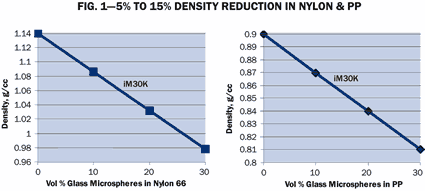
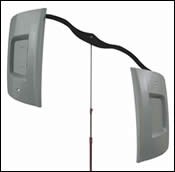

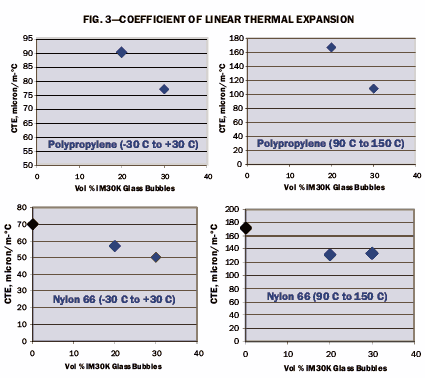
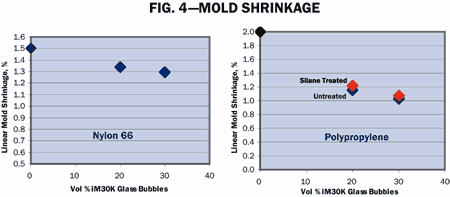
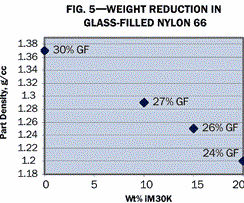
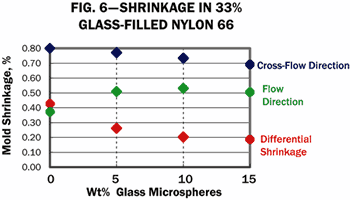




.png;maxWidth=300;quality=90)






















